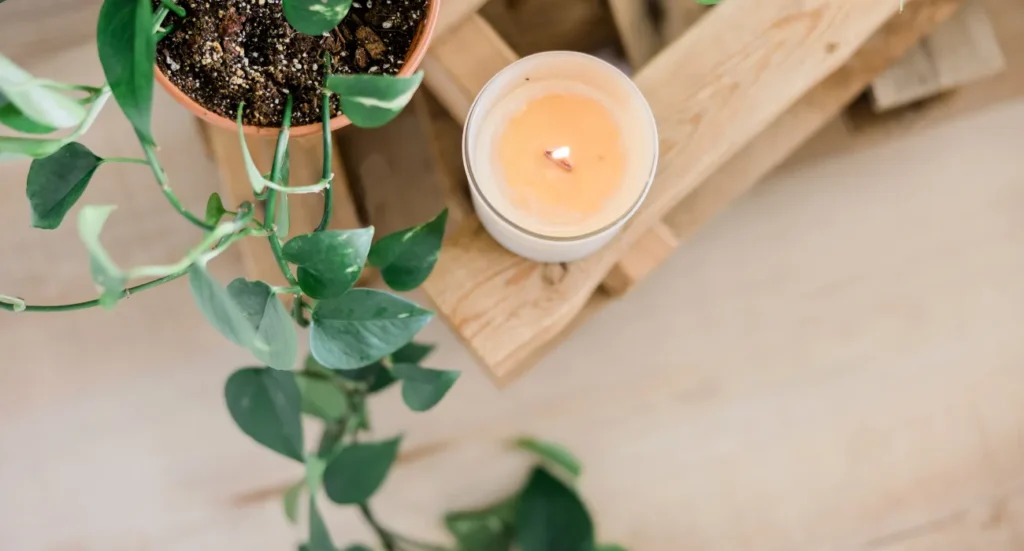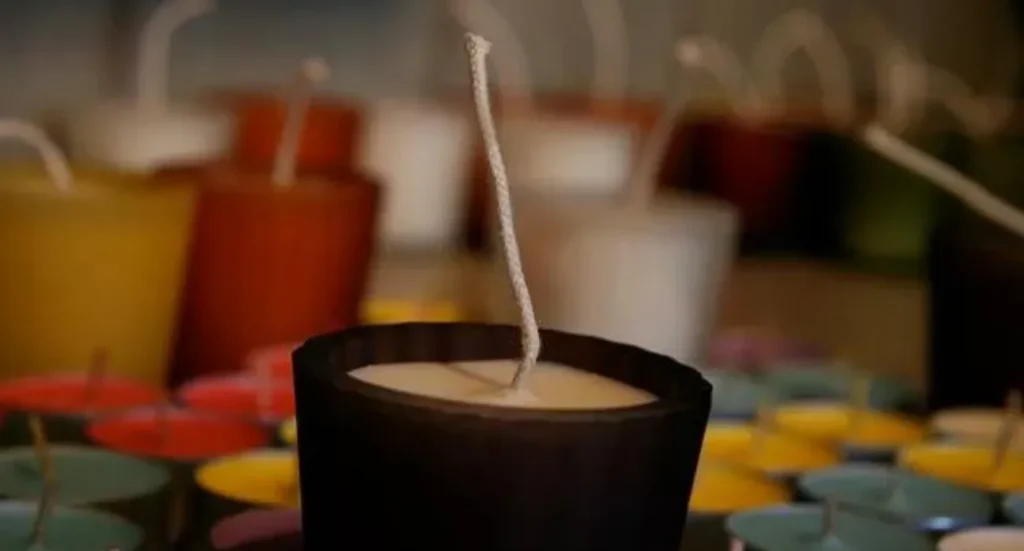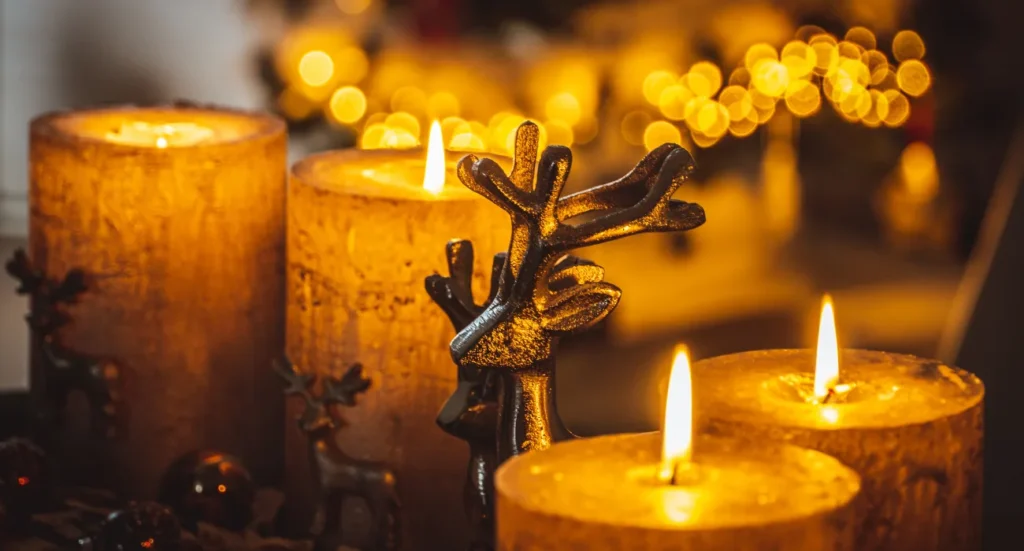DIY Candles / Homemade Candles
There’s something magical about the warm glow of a candle flickering in your home, casting dancing shadows on the walls while filling the air with your favorite scent. But what if I told you that most store-bought candles are quietly polluting your indoor air with toxic chemicals? The good news is that homemade candles offer a beautiful, healthy alternative that’s surprisingly easy to master.
DIY candles have become increasingly popular as people seek cleaner, more sustainable alternatives to mass-produced options. When you create your own candles, you control every ingredient, ensuring a pure, non-toxic experience that commercial candles simply can’t match.
Why Store-Bought Candles Fall Short

Most commercial candles contain paraffin wax, a petroleum byproduct that releases harmful chemicals like benzene and toluene when burned. These toxins can trigger headaches, respiratory issues, and other health concerns, especially in poorly ventilated spaces.
Natural candle making eliminates these risks entirely. By using plant-based waxes like soy or beeswax, you create clean-burning candles that actually improve your indoor air quality rather than compromising it.
Essential Materials for Candle Making at Home
Creating homemade candles requires surprisingly few materials, most of which you can find at local craft stores or online retailers.
Wax Selection
Choose between soy wax flakes or beeswax pellets (2 cups needed). Soy wax burns cleaner and longer than paraffin, while beeswax offers natural honey scents and air-purifying properties. Both options create eco-friendly candles that support sustainable practices.
Wicks and Containers
Select cotton wicks sized appropriately for your container width. Glass jars, vintage teacups, mason jars, or decorative vessels work beautifully. Ensure containers can withstand heat and have enough depth for proper wick placement.
Fragrance Options
Essential oils provide natural scenting without synthetic chemicals. Popular choices include peppermint, vanilla, frankincense, ginger, or nutmeg. Start with 5-10 drops per candle, adjusting based on scent strength preferences.
Equipment Needed
Gather a glass mixing bowl, saucepan for double-boiler setup, candy thermometer, wooden spoon, clothespin, and scissors. These basic tools ensure safe, controlled candle making at home.
Step-by-Step Natural Candle Creation Process
Melting the Wax

Create a double-boiler system by placing your glass bowl over a saucepan filled with water. Heat on medium temperature until wax melts completely. Alternatively, microwave wax flakes in one-minute intervals, stirring between sessions.
Monitor temperature carefully—optimal pouring temperature sits around 120°F. Too hot, and you risk container cracking; too cool, and the wax won’t pour smoothly.
Preparing Your Container
While wax melts, prepare your chosen vessel. Clean thoroughly and ensure it’s completely dry. Position the wick in the center, using a small amount of hot wax to secure the bottom end.
Stretch the wick across the container opening, securing with a clothespin to maintain center positioning. This prevents your finished candle from tunneling during burning.
Adding Fragrance
Once wax reaches proper temperature, remove from heat and add essential oils. Stir gently but thoroughly to distribute scent evenly. Scented candles made with natural oils provide aromatherapy benefits without synthetic chemical concerns.
Pouring and Setting
Pour melted wax slowly into your prepared container, leaving approximately ¼ inch space at the top. Maintain wick positioning throughout the process. Allow candles to set overnight for complete hardening.
Creative Container Ideas for Unique Results
DIY candles shine when you think beyond traditional containers. Vintage teacups create elegant gifts, while mason jars offer rustic charm. Shot glasses make perfect votive candles, and decorative ceramic bowls create statement pieces.
Consider seasonal themes—autumn containers might feature warm colors and cinnamon scents, while spring versions could showcase floral designs and fresh fragrances.
Safety Considerations for Home Candle Making
Working with hot wax requires careful attention to safety protocols. Always use heat-resistant containers and maintain steady temperatures to prevent accidents. Keep workspace clear of flammable materials and ensure proper ventilation.
Test burn new candles in safe environments before gifting or extended use. Trim wicks to ¼ inch before each lighting to prevent excessive flame height and smoking.
Troubleshooting Common Candle Making Issues
New candle makers often encounter similar challenges. Tunneling occurs when wicks are too small for container size. Cracking happens when wax cools too quickly or temperatures fluctuate dramatically.
Uneven surfaces result from pouring wax at incorrect temperatures, while weak scent throw indicates insufficient essential oil or improper mixing. Each issue has simple solutions once you understand the underlying causes.
Gift-Giving and Presentation Ideas

Homemade candles make exceptional gifts for teachers, neighbors, hostesses, and service providers. Create themed sets—kitchen herbs for cooking enthusiasts, relaxing lavender for stressed friends, or seasonal scents for holiday celebrations.
Personalize presentations with decorative labels, coordinating ribbons, or custom containers that reflect recipients’ personalities and preferences.
Cost-Effective Benefits of DIY Candle Making
Creating natural candles costs significantly less than purchasing premium alternatives. Quality soy wax candles retail for $20-40, while homemade versions cost under $5 each. The initial investment in materials pays for itself after just a few candles.
Bulk purchasing wax and supplies reduces per-unit costs further, making candle making at home both economical and environmentally responsible.
Seasonal Fragrance Combinations
Experiment with seasonal scent blends to create year-round appeal. Winter combinations might include pine and vanilla, while summer versions feature citrus and mint. Spring candles could showcase floral essences, and autumn scents might blend cinnamon with apple.
Document successful combinations for future reference and gift-giving occasions.
Advanced Techniques for Experienced Makers
Once comfortable with basic DIY candles, explore advanced techniques like layered colors, embedded decorative elements, or unique wick configurations. These methods create professional-looking results that rival expensive boutique candles.
Consider specialty waxes like coconut or palm for different burning characteristics and aesthetic appeal.
Frequently Asked Questions
1. How long should homemade candles cure before burning?
Allow homemade candles to cure for 24-48 hours before initial lighting. This ensures complete wax solidification and optimal scent distribution throughout the candle.
2. What’s the ideal wick size for different container widths?
Choose wick sizes based on container diameter: small containers (2-3 inches) need small wicks, medium containers (3-4 inches) require medium wicks, and large containers (4+ inches) need large or multiple wicks for even burning.
3. Can you reuse old candle containers for new DIY candles?
Yes, clean old containers thoroughly by removing remaining wax with hot water and soap. Ensure containers show no cracks or damage before reusing for natural candle making.
Environmental Impact and Sustainability
Choosing eco-friendly candles reduces environmental impact through renewable wax sources and reduced packaging waste. Soy wax comes from sustainable soybean crops, while beeswax supports healthy bee populations essential for ecosystem balance.
Creating candles at home eliminates transportation emissions and excessive packaging associated with commercial products.
Building Your Candle Making Skills
Start with simple designs before attempting complex projects. Practice temperature control, wick placement, and fragrance balance through repeated creation. Join online communities or local workshops to learn from experienced candle makers.
Document your processes, noting successful techniques and areas for improvement. This creates a personal reference guide for consistent results.
Making candles at home transforms a simple craft into a meaningful practice that benefits your health, saves money, and creates thoughtful gifts. Whether you’re seeking cleaner indoor air, creative fulfillment, or unique presents, DIY candles offer endless possibilities.
The satisfaction of lighting a candle you created yourself, knowing every ingredient is pure and natural, creates a connection to your living space that store-bought alternatives simply cannot match. Start your candle-making journey today, and discover the joy of crafting beautiful, healthy illumination for your home.

